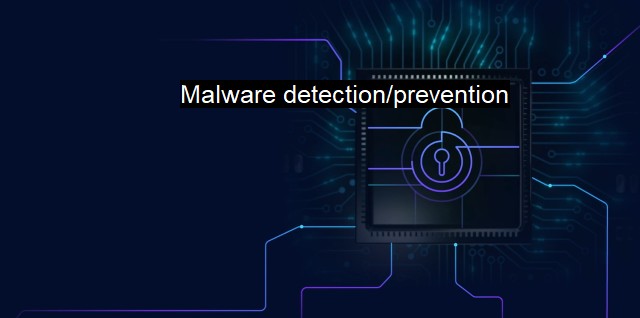What is Malware detection/prevention?
The Crucial Role of Antivirus Software in Preventing Cyber Attacks and Malware Infections in Today's Digital Landscape
Malware detection and prevention are critical aspects of cybersecurity that involve identifying and counteracting malicious software (malware) in order to protect computer systems and networks. Malware is a type of software created to damage, disrupt, or gain unauthorized access to computer systems and data. This malicious software includes a variety of forms such as viruses, trojans, worms, ransomware, adware, and spyware.The primary role of malware detection is to discover and identify these malicious elements within the system. It involves software algorithms designed to analyze and compare suspicious code with known malware signatures. These signatures refer to unique identifiable features of a specific malware, including patterns, anomalies, and predictable behavior profiles. If a match is found, the system flags the malicious code for review or removal.
Modern malware detection tools utilize advanced antivirus and automation technology for precision identification. These tools can carry out checks constantly and in real-time, intercepting malware before it can compromise a system’s security posture. With threats new and old continuously evolving, dynamic malware detection that can adapt to the changing threat landscape is essential.
In contrast, malware prevention focuses more on keeping malicious software out of network systems in the first place. Prevention strategies employ a multitude of defense mechanisms in a layered approach to achieve this effectively. These layers can include firewalls for network-level protection, antivirus software for detection and removal, email filtering, secure web gateways to protect against internet threats, and systematic software updates to affirm that the security measures are up-to-date against emerging risks.
Secure coding practices also play a crucial part in preventing vulnerabilities that malware can exploit. To aid in stopping human error—a frequent cause of security issues—organizations invest in training employees on safe online behavior, recognizing phishing attempts, and exercising careful download practices.
a more modern approach to malware prevention lies in behavior-based detection, in contrast to traditional signature-based detection. This approach, also known as heuristic analysis, doesn’t rely on previously discovered malware signatures; instead, it monitors the behavior of applications and files in real time. If nonstandard behaviors or actions indicative of a possible malware threat are detected, the system raises an alert.
In cybersecurity practices, malware detection and prevention work interchangeably to secure a system against threats. After a threat is detected, the system opposed to just identifying the malware, also stops it from causing damage and removes it from the machine—prevention in action. Meanwhile, prevention minimizes the likelihood of a system downloading and running any hidden malware while educating and training users in safe internet practices provides an overall safety net.
It must be clearly understood though, that neither malware detection nor prevention can claim 100% effectiveness, given the rapidly evolving and increasingly advanced nature of cybersecurity threats. It is therefore important for organizations to adopt a "defense in depth" strategy—applying multiple security controls at various levels in a system combined with constant vigilance, regular updates, and patches as part of a big-picture solution against malware and cyber threats.
In the end, countering malware advances is a proactive process. Leveraging powerful antivirus software, being vigilant about potential threats, installing trustworthy applications, routine backup of essential data, updating systems, and educating users about safe internet practices form the essence of effective malware detection and prevention.

Malware detection/prevention FAQs
What is malware detection?
Malware detection is the process of identifying and analyzing malicious software that can harm computer systems, networks, or personal devices.What is malware prevention?
Malware prevention refers to the measures and tools used to keep malware from infecting a system, including firewalls, antivirus software, and regular software updates.How does antivirus software detect malware?
Antivirus software uses various methods to detect malware, including signature-based detection, behavior-based detection, and heuristics. Signature-based detection compares a file's code with a database of known malware signatures, while behavior-based detection looks for suspicious actions that may indicate malware. Heuristics analyzes a file's behavior to determine if it is potentially harmful.How can I protect my system from malware?
You can protect your system from malware by practicing safe browsing habits, not clicking on suspicious links or downloading unknown files, using antivirus software, keeping your software up-to-date, and regularly backing up important data. It's also important to be cautious of phishing email scams and to use strong passwords.| | A | | | B | | | C | | | D | | | E | | | F | | | G | | | H | | | I | | | J | | | K | | | L | | | M | |
| | N | | | O | | | P | | | Q | | | R | | | S | | | T | | | U | | | V | | | W | | | X | | | Y | | | Z | |
| | 1 | | | 2 | | | 3 | | | 4 | | | 7 | | | 8 | | |||||||